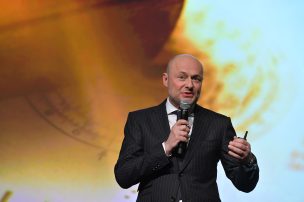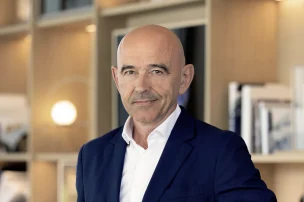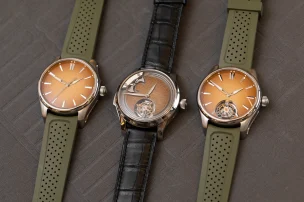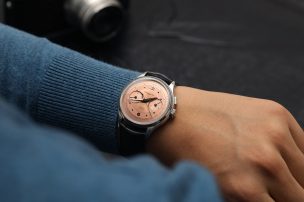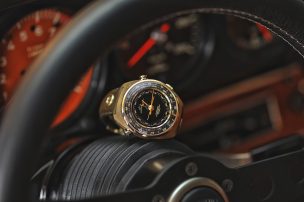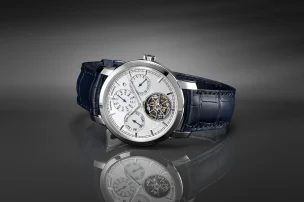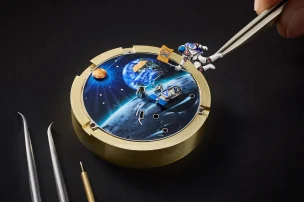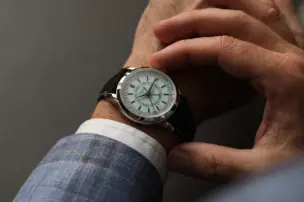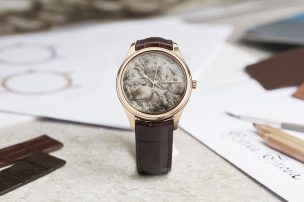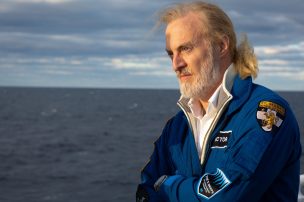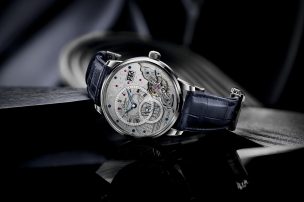
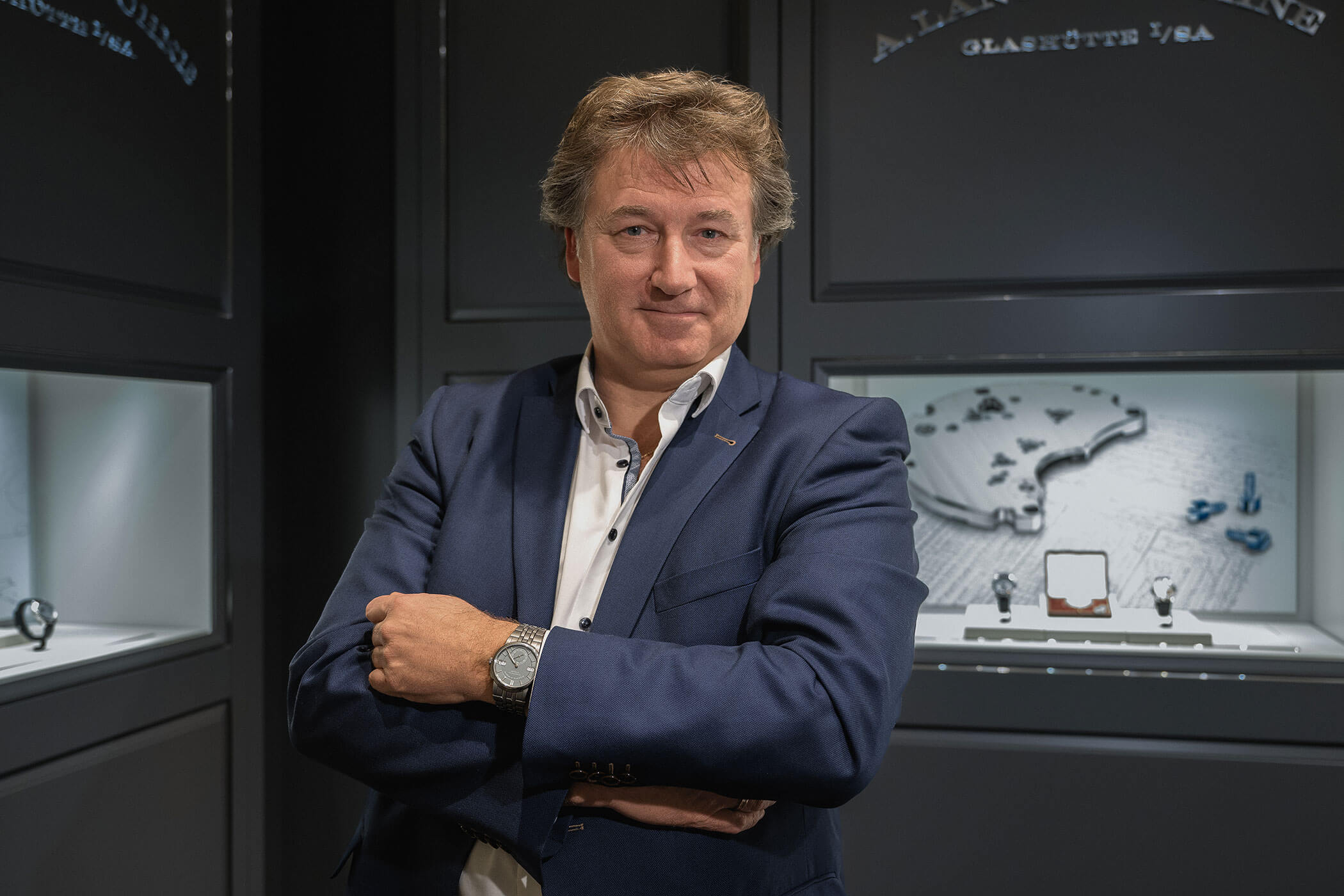
20 Years at A. Lange & Söhne: Interview With Anthony De Haas, Long-Standing Director of Product Development
Anyone with a passion for A. Lange & Söhne’s mechanical watches will know of Dutchman Anthony de Haas as well as CEO Wilhelm Schmid. As Director of Product Development, he is personally responsible for many of the brand’s 72 in-house movements. Whether it was the Zeitwerk, Grand Complication or the first steel watch Odysseus, he played a role in the creation of numerous pioneering developments. This year, de Haas himself is celebrating a milestone anniversary, having been at the manufacture for 20 years. But how exactly are the world-renowned movements from A. Lange & Söhne really created? We joined de Haas for a conversation about tradition, the perks of holding meetings without an agenda, and Lange fever.
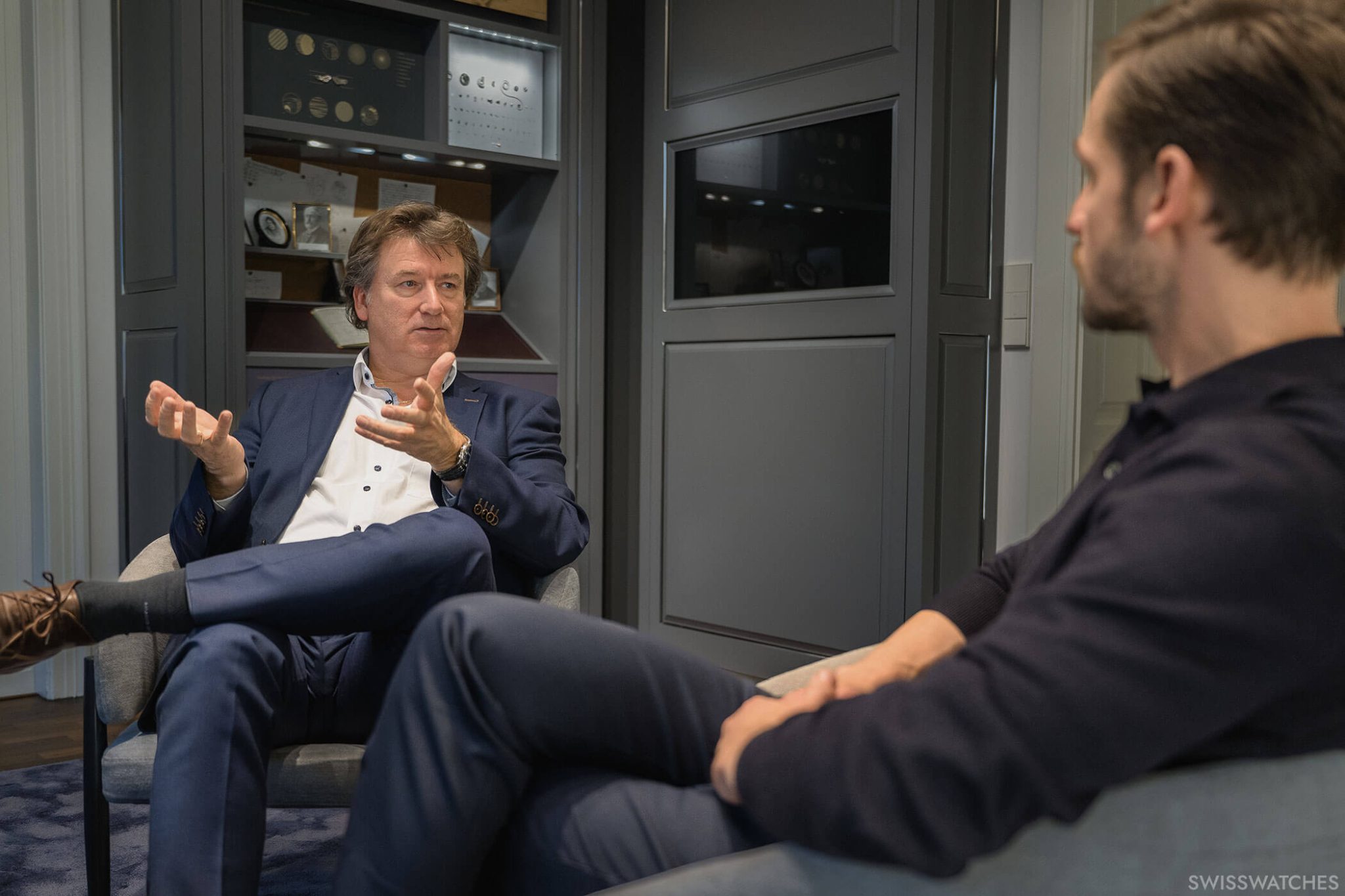
You are celebrating a personal milestone this year: you have been responsible for product development at A. Lange & Söhne for 20 years and have been involved in many pioneering developments. Which of the many models are you particularly proud of?
Even if it sounds trite, I am first and foremost proud of our team. Then, of course, there are our masterpieces, our ‘Big Four’ as I call them: the Zeitwerk, the Grand Complication, the Lange 1 Perpetual Calendar with tourbillon and, of course, our first steel watch, the Odysseus.
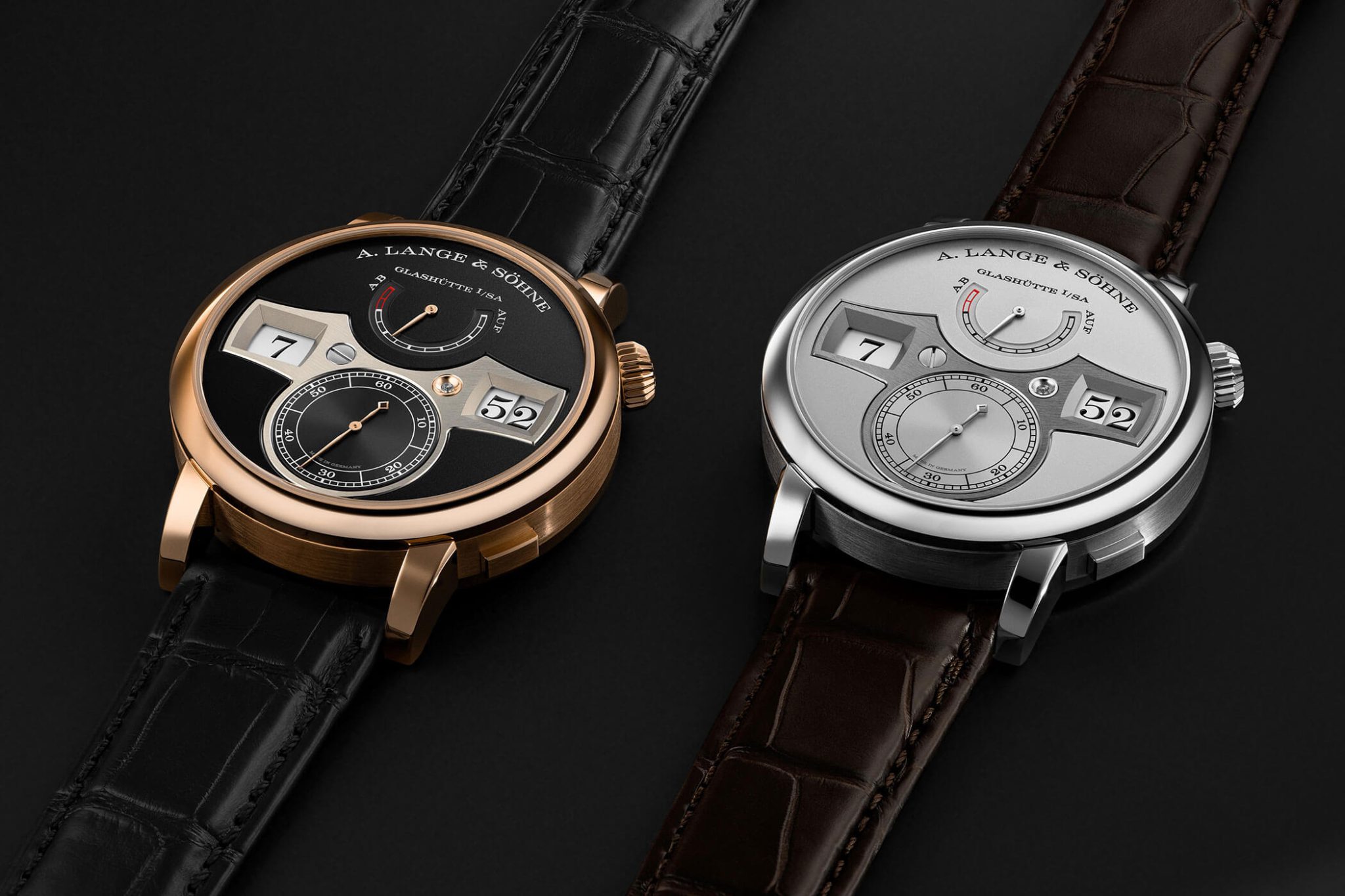
What do you think about the watches designed before your time, which laid the foundation for the comeback of A. Lange & Söhne? How good were those watches in your eyes?
Take the original Datograph from 1999, which was the first newly developed chronograph in the industry for many decades, and not just in Germany. It was the first watch from A. Lange & Söhne that I ever held in my hands. It immediately made me think of Günter Blümlein. He showed me this watch at the time and it immediately infected me with the Lange fever, even though I was on my way to Audemars Piguet at the time and would work there for another seven years before moving to Lange.
Your career began at IWC, where you also met Günter Blümlein.
Yes, from 1996 to 1998. I’ll never forget it: he asked me why I was leaving IWC. I told him truthfully that it was because I could work on complicated watches at Audemars Piguet. I was head of the after-sales service department at the time. He countered: “But you can also develop complications here.” He then showed me a Datograph prototype and said: “Everything is developed in Saxony.” But I had already signed my contract with AP. He respected that and we remained in contact. In November 2001, I travelled to Glashütte for the first time, and it made a big impression on me. At the beginning of 2004, I got the call and moved to A. Lange & Söhne.
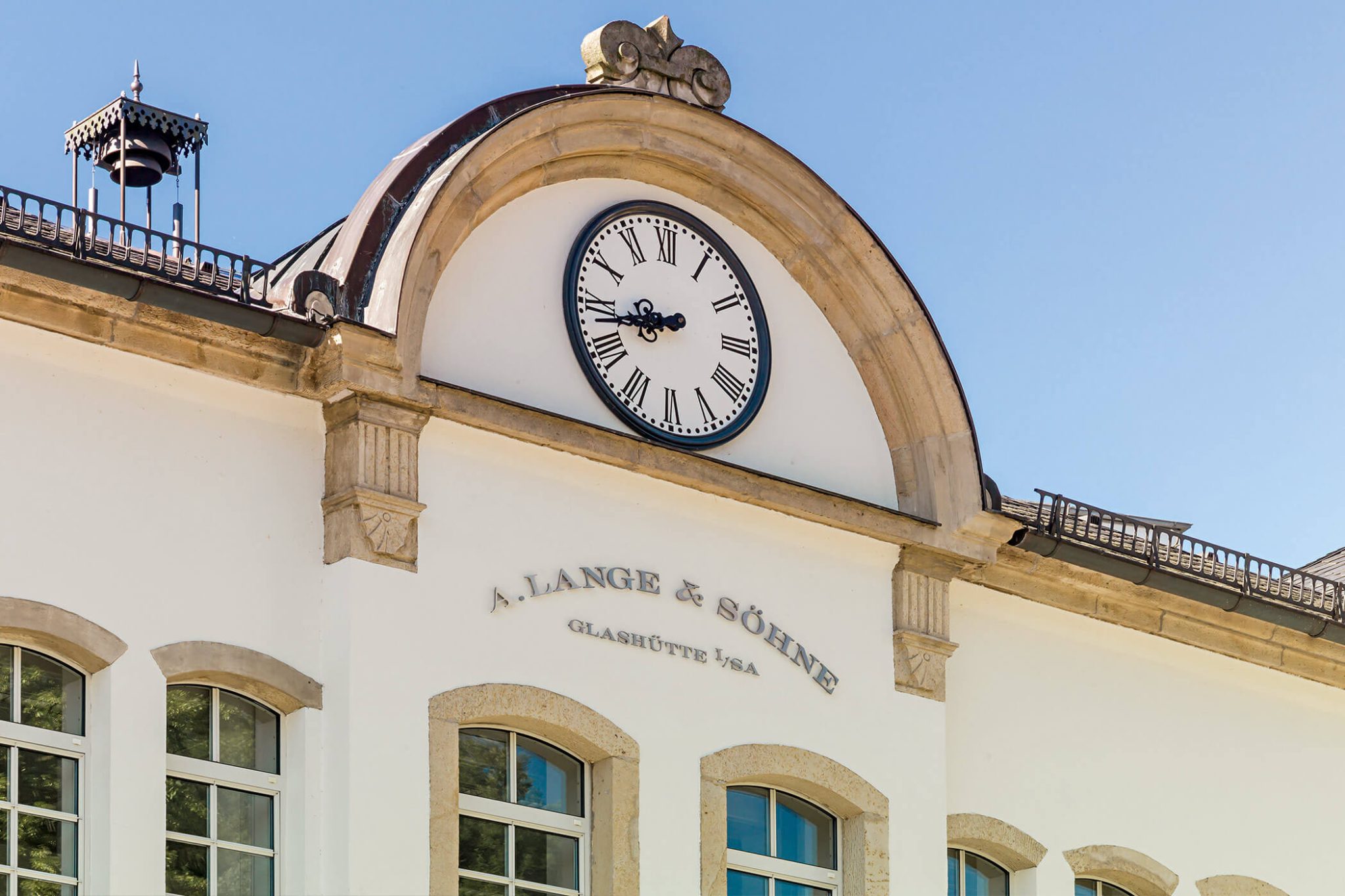
What is the most difficult project you have ever worked on?
The Odysseus, without question. Not so much in terms of the technology, but in terms of the type of watch, because it was a completely new concept for us, one that had never existed at A. Lange & Söhne/had only existed as an idea for a long time. We could also have made a lot of mistakes with the project, especially when you compare this first steel watch with the projects of large manufactures in Geneva, some of which have had an uninterrupted tradition in the field of steel watches for over 50 years. Many of these watches are icons today.
How did Lange come to develop its first steel watch? It doesn’t seem that Lange really needed a model in stainless steel – it doesn’t exactly correspond to the company’s tradition…
When I started at Lange in 2004, it was all about getting to know the market and the customers better. Even back then, collectors often asked: “I have ten Lange watches at home, but none for the best time of the year, namely for lying on the beach in summer.” That’s how the idea was born. I kept asking questions in meetings afterwards: How do we deal with this? Do we make a Lange 1 on steroids? A kind of Lange 1 XL with crown protection? [Laughs] But seriously, the question immediately arises at A. Lange & Söhne: Which movement would power a sporty Lange watch? And then the challenges begin: Can you introduce a Langematik with a large date in steel, even though it is already available in platinum?
Why did the project take so long – 15 years to be precise?
We didn’t really have time for such a sporty watch. Our team had an incredible amount to do: The Lange 31, the Zeitwerk, the Grand Complication – each watch in itself a huge project for a small company like A. Lange & Söhne. And don’t forget: only three watch designers work here.
So you put off the project.
Well, five years later, in 2009, it came back on the table in the form of something completely different: what later became the Daymatic, i.e. the Lange 1 as an automatic watch. There was only an initial sketch, but that alone was reason enough for us to say: No, that won’t work. When we do something like this at A. Lange & Söhne, you have to create your own look; you can’t use something that already exists in the design.
So what happened next to the Odysseus project?
In 2013, we developed the first ideas featuring an date and a day window to the right and left of the hand axis, from which the Odysseus later emerged.
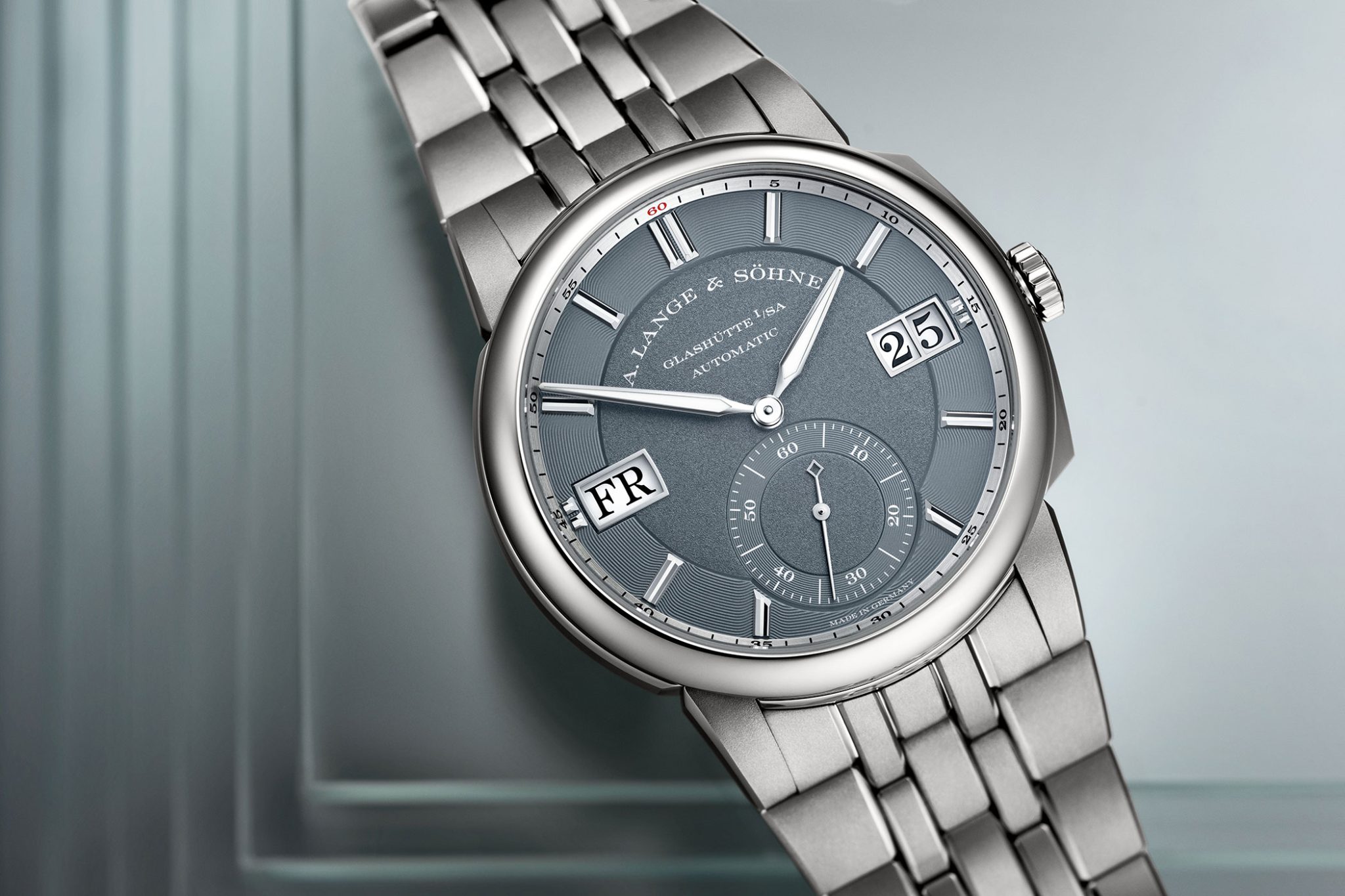
What was the reaction to the launch? What were you expecting?
When we finally launched it in 2019, some people naturally complained. That’s life. My favourite comment was the one that said the bracelet was far too wide. Yet we had made 20 prototypes! Who does that for a bracelet? The Odysseus really was a long time in the making, with a total of three creative attempts before the launch.
What has changed fundamentally since you joined A. Lange & Söhne, and what has remained the same over the years?
Above all, the market has changed radically and there are many more independent watchmakers out there today. This is wonderful, because it encourages creative competition. There are many more young brands where the founders are still personally involved alongside the big brands. At A. Lange & Söhne, we see ourselves right in the middle.
That’s not normally a position that companies like to be in: you could be crushed in-between the big and the small!
On the contrary: we have crazy ideas like the independent ones, but we also have the professionalism in sales and after-sales service like the really big manufactures. This is a very interesting position, especially for collectors who think long-term and still want to have their watches repaired after 20 years or in the next generation.
And what has not changed since you first joined A. Lange & Söhne?
We will always remain timeless, never fashionable. Of course, we might still sometimes make something like a blue aventurine dial with a beautiful glittering effect, because it goes perfectly with a dress watch like the Saxonia Thin.
How does the development of a new movement work at A. Lange & Söhne? What exactly does it involve?
The movements are always the result of team ideas. A team of around 10 employees is involved in the design, five of whom have a watchmaking background and have undergone further training. The other five have a university background. This is the perfect mix for me, because each group has a different approach.
You talk about synergies, but do you organise workshops, or how does the development work?
I’m not a fan of that at all – it’s all marketing for me. For example, I often hold meetings without an agenda. That was very scary for some employees at the beginning. Sometimes I bring out a watch magazine with a specific focus, but that’s about it. And then you talk about it; our people just do their job. Anyway, when you deal with watch movements on a daily basis, creativity comes naturally!
That’s exciting, but hard to imagine! Can you name an example of a watch where this process took place?
That’s exactly what happened with the Lange 31, for example. There was this overview in a trade magazine: 8-day, 10-day power reserve for watches. One employee said in a meeting: “Actually, we should do 31 days.” The other designer replied: “That’s not possible.” And I then said to both of them: “If you can explain to me in three weeks why that’s not possible, then I’ll drop the idea.” As you know, the one employee then came up with a very good idea.
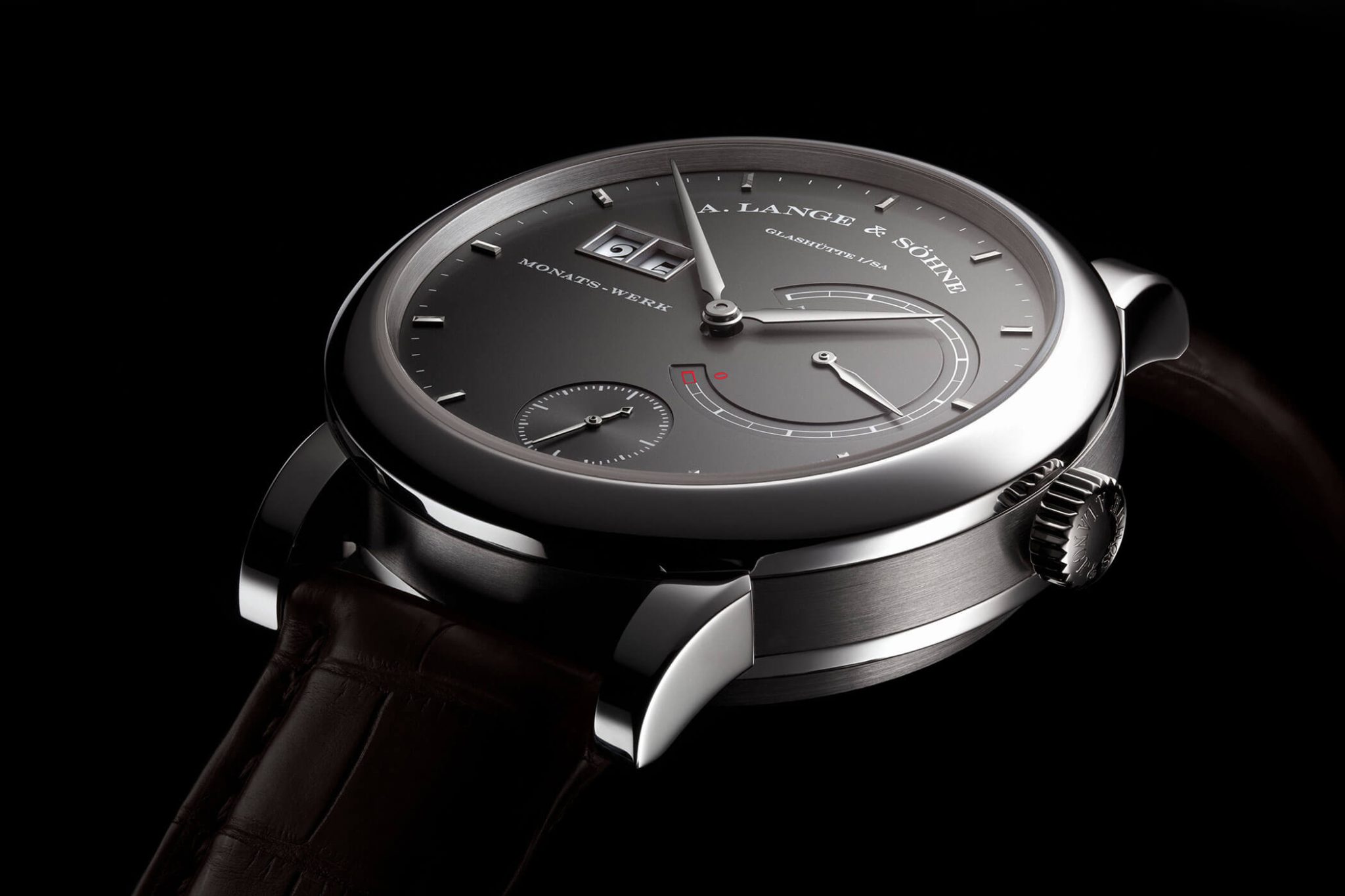
This resulted in a Lange world record with the well-known rewinding movement that we know from pendulum clocks, such as the one at Lange’s headquarters. Was it really that simple?
On the contrary! We had five prototypes that were ready a few months before the trade fair – all of them were functional, with some even lasting 33 days. But I put the brakes on my colleagues by saying: Now we need two years to get them ready for series production. Because we really do test our watches to the extreme. We now had a choice. Either we wait two years with the risk of someone else doing it or we show the prototypes at the trade fair and tell customers that they can order, but we won’t deliver for another two years.
Which you eventually did – it still sounds risky, though. Are you happy to take such risks at A. Lange & Söhne?
No. In fact, it is against our almost sacred principle to launch something that is not ready. But in this case, we simply wanted to be the first in the world.
Many manufactures work on a modular basis when developing movements. Can you take important experience from one development into the next?
At the very least, one idea often fertilises the next. The Lange 31 solution indirectly triggered another development. We had a completely different problem with the Zeitwerk: where do we get the energy to move the dials? We further developed the remontoir system to rewind every ten seconds. And because we can manufacture our own hairsprings, we can of course also produce these remontoir springs in-house.
What criteria does A. Lange & Söhne use to decide whether to realise a new movement?
The basis for new ideas remains our six main collections, which everyone in our company knows by heart: the Richard Lange, the 1815, the Lange 1, the Odysseus, the Saxonia and the Zeitwerk. These are divided into specific market segments. Long before every technical question, there is also a commercial one: how much money can I sell this idea for? The rule here is: a collector must recognise straight away that this watch is something special. The most important phrase that we want to avoid with sellers in the boutique is: ‘Yes, but –’.
What do you mean?
At A. Lange & Söhne, an innovation must be recognisable, functional, and coherent. This is an important difference to other manufactures. We also have to manage our innovations without compromising on quality. The discussion that the competition could offer this or that cheaper must not even arise.
How do you ensure that your movements are not subject to general trends such as tourbillons, which were very popular with collectors for a while?
We now know that many manufactures have subsidised their tourbillons well, because they are often not as complicated as they look. Today, for example, moonphases are very popular. You can compare them on the market with the moonphases in A. Lange & Söhne movements. During the day, you won’t see any stars, but a day disc with a light blue sky. We call it ‘discreet complications’. But even with such an idea, the price has to be right in the end.
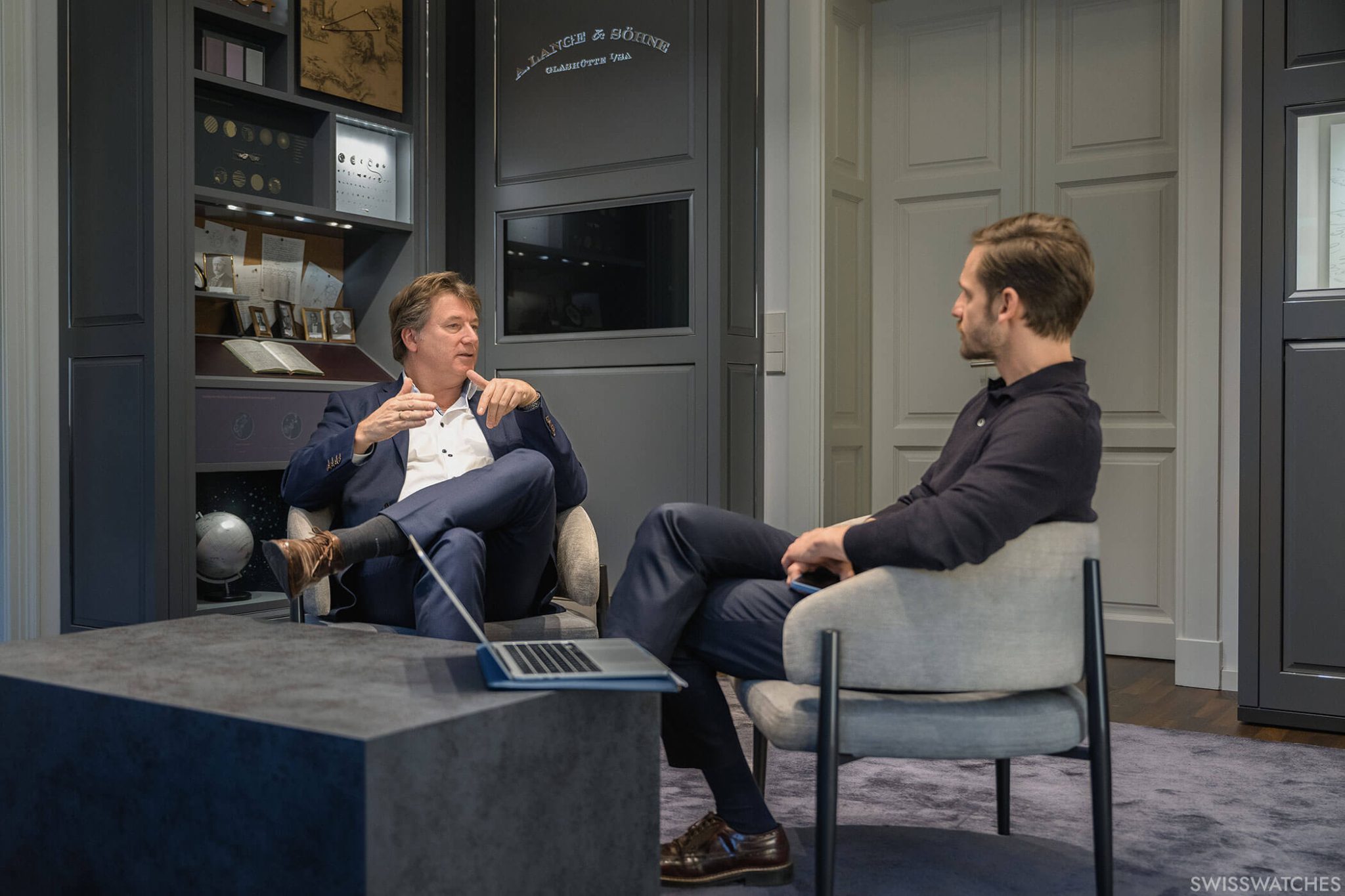
A. Lange & Söhne has now revised the movements of certain models such as the Lange 1 or the Zeitwerk. What criteria do you follow when improving movements?
To revise the Lange 1, we first asked the designers back in 2012, “If you had to develop the watch now, how would you do it?” The second question went to the engineers: “If you could change something, what would be the most important points?”
So you optimise production? Decreasing sales figures don’t matter?
No, of course there are always things that can be improved. But when we reintroduced the watch in 2015, it sold just as well as before. And, of course, this meant that we also had to revise the Lange 1 time zone and the moonphase, as they were based on the old Lange 1 movement. We always want to surprise our customers.
Many developments in precision watchmaking are moving in the direction of incorporating new materials into the design, such as silicon balance springs. Why did A. Lange & Söhne resist this trend?
We tend to see silicon in mass production, not with us. We prefer to invest in good people who can learn to bend a Breguet end curve. These are skills that take years to develop. There are no shortcuts in the luxury sector. Apart from that, I don’t see any real need for materials such as silicon: after all, the greatest influence in magnetism is on the balance spring, not the hairspring.
Was the issue of in-house capabilities also the reason why you did not manufacture the first Grand Complication together with an external expert in Switzerland?
Yes, of course I could have called my old company Renaud & Papi and commissioned the product there. [Laughs] But we preferred to work on it for eight years so that we could do it ourselves. We didn’t do the first Grand Complication just for publicity, as important as that is, but to prove what we can do here in Glashütte: today, we could recreate the complete watches that Ferdinand Adolph Lange created himself, because we have all the skills to do so. It was also the first watch from A. Lange & Söhne with a striking mechanism, i.e. grande sonnerie, petite sonnerie and minute repeater. This is because striking mechanisms do not have a tradition in Glashütte, as many historical pocket watch movements with striking mechanisms originated in Switzerland. This watch is therefore also an important milestone for Glashütte.
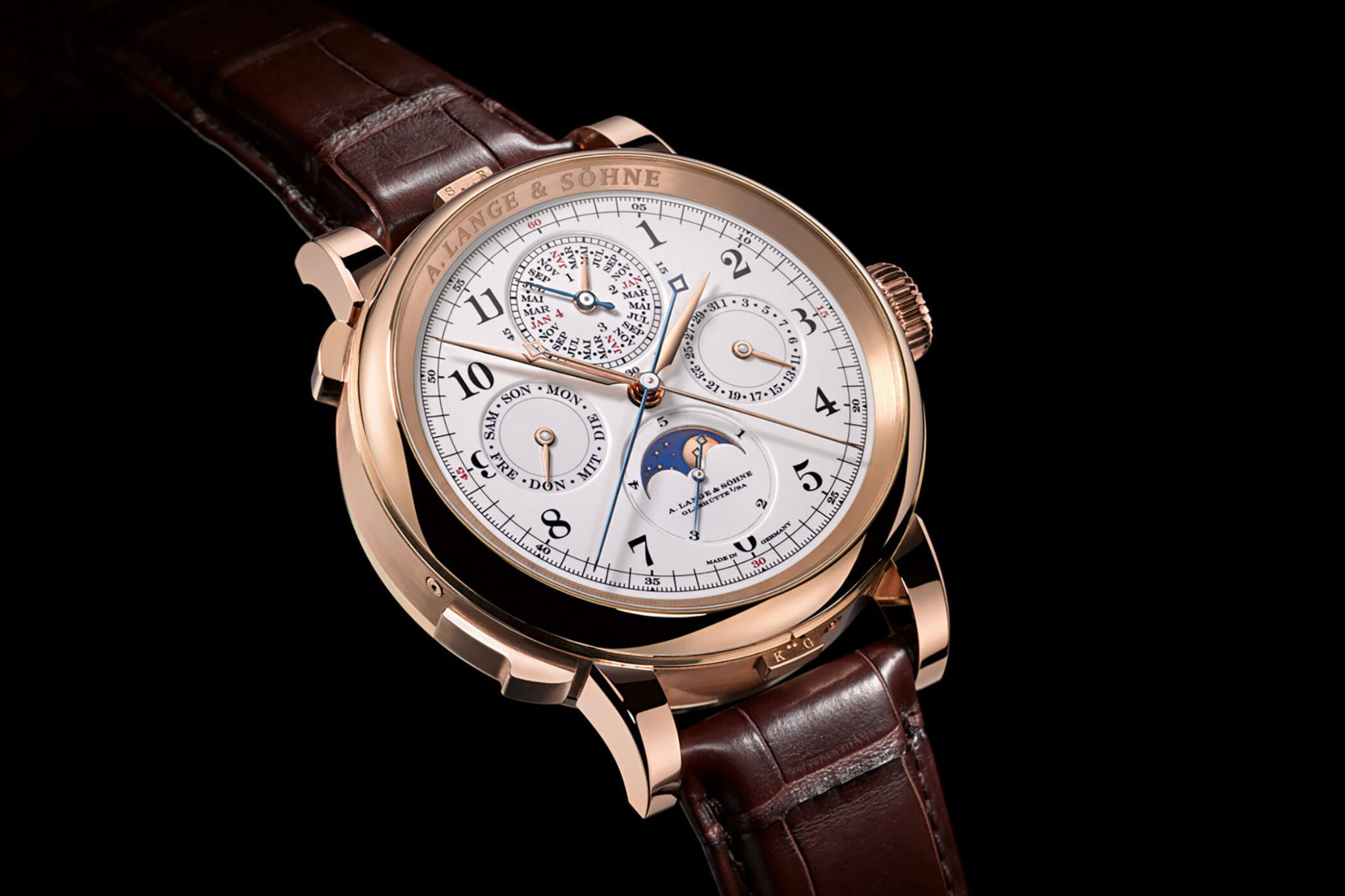
If you could ask one person from the almost 180-year history of A. Lange & Söhne a question, who would it be and what would you want to know?
I would really like to meet Günter Blümlein again and ask him what he thinks about how we have developed. How have we continued his pioneering work? Would he be happy with us?
He would hardly have reason to complain, what with A. Lange’s current portfolio of no less than 72 movements!
He would probably be amazed. When I started, we had around 330 employees – today we have 600 in Glashütte alone. We all have a bit of a chip on our shoulder here, but the passion for mechanical watches is infectious.
